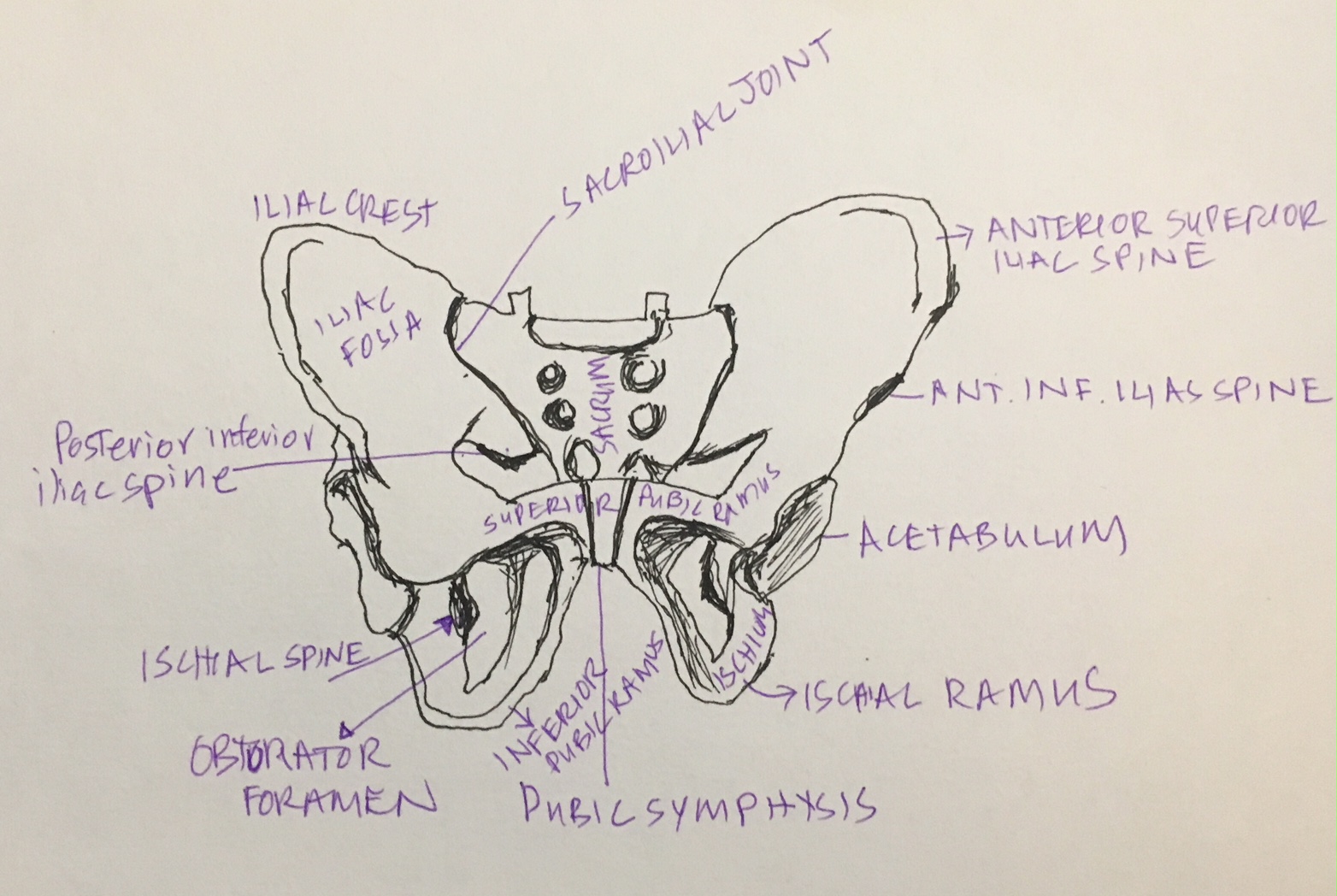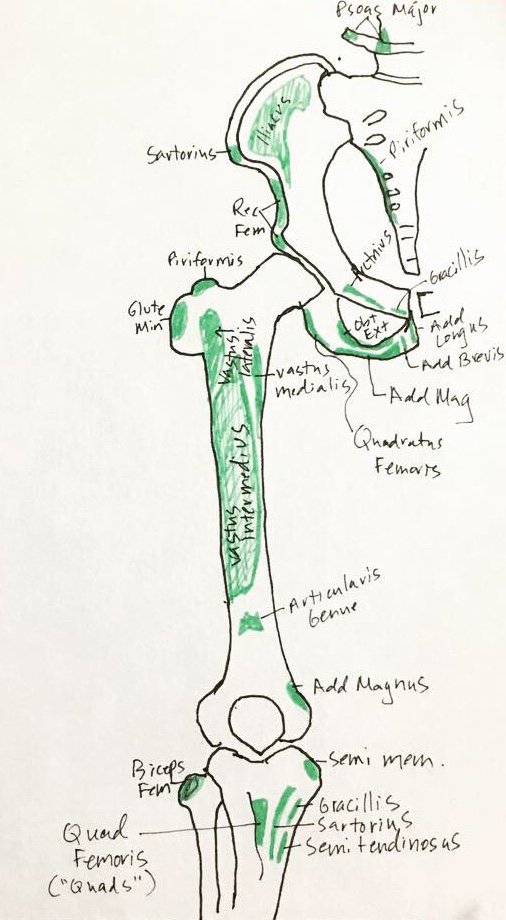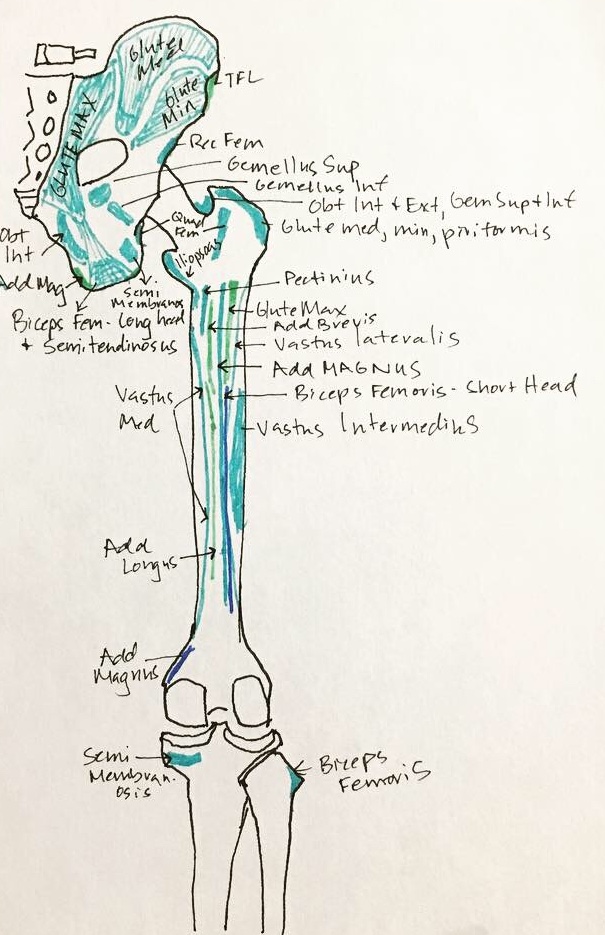Yes. I purposefully tried to make the title of this blog as confusing as possible. Why? Does it mean I’m not a good writer? Does it mean I don’t care about the edification of my readers? Does it mean my brain finds pleasure in confusing word play that takes a couple of moments to figure out? Because, No, No, and Yes. 🙂
So, Adductors. If you are like me, you probably have only ever heard of adductors as a glump of muscles that get “stretched” in wide-legged yoga poses like prasarita padattonasana (wide-legged forward fold). Before starting school at the Center for Neurosomatic Studies (CNS), I had only a vague notion of some muscles in my inner thigh that were super tight, and which did not allow me to do wide-legged poses without getting a cramp in my butt. Thank you, CNS, for helping me understand with specificity what these muscles are.
Your adductors are made up of several different muscles that connect from the lower portion of your pelvis to the back side of the long bone of your thigh (the femur). I realize the pelvis can be a bit of mystery as well, so here is brief overview of the points we need to know about. The pubis is the bone on the front of your pelvis. If you are like me, you often accidentally ram this into countertops/tables, and it hurts like a mother.
Directly underneath the pubis is the ischium. Sit on your hands. Go ahead – it’s okay. Sit on your hands. You feel those bones pressing into your hands? Those are your ischiums (commonly called “sit bones”). The pubis and the ischium are the superior (aka “upper” or “northern”) attachment points for the adductors, as you can see in the drawing below (which is a view of the pelvis from the front). Disclaimer: these are drawings I did quickly for my own personal study aids, so they are not 100% accurate. They’ll give you a gist of the anatomy, however. You can click on the pictures to make them bigger.

The adductors are made up of the Pectineus, Adductor Longus, Gracilis, Adductor Brevis, and Adductor Magnus muscles. You can see the specific attachment points in the illustration below. (Please note that my anatomy text led me astray in regards to the attachments of Gracilis and Adductor Longus. They should actually be flipped).

From the pelvis, the adductors travel at an angle to connect to the back of the femur, as you can see in the illustration below. I used to think that the back of the thigh was made up of just the hamstrings. But there is a lot going on back there! All the adductors connect there, as well as many of the quadriceps.

Why are the adductors important? For SO many reasons! They have trigger points that can present as pain in the front and inside of the thigh and in the genitals and rectum. They can cause the sacrum to tilt, which forms an uneven base for the spine, resulting in a functional scoliosis. Also, the adductor magnus can pinch the greater saphenous nerve, causing the knee to collapse while walking.
At CNS we learn how to treat the adductors, which can relieve the symptoms described above. But sometimes releasing a muscle is not what it needs. Sometimes it needs to be stronger. Weak muscles can contribute to pain, just like over-active muscles can. I love the Adductor Slides Yoga Tune Up® pose; it helps you tune in to your adductors and strengthen them in a fun and slightly excruciating way. Here is a demo from Trina Altman.
Well, I hope you learned a little something about your body today. If you try the adductors slides, let me know what you think.
Thanks for reading today!

Great post! I remember trying that Adductor Slide, pretty intense! Also, the second photo is not clickable to make bigger, but the others are.